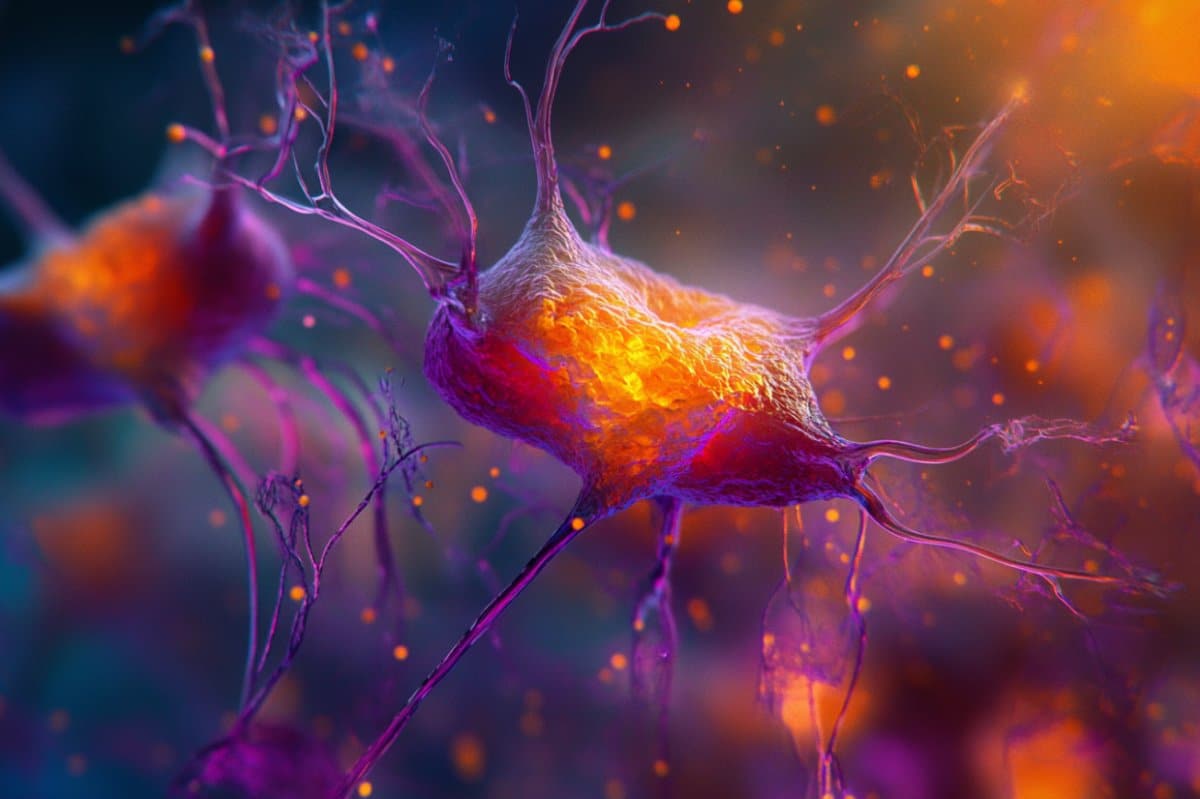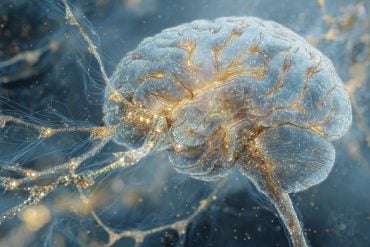Summary: A research team has uncovered a molecular “switch” that precisely regulates NMDA receptors, key players in brain communication, by blocking excitatory synapse overactivity. The proteins MDGA2 and EphB2 were found to compete for receptor activation, with MDGA2 acting as a natural inhibitor.
Using AI-based protein structure prediction, scientists pinpointed the exact binding sites, allowing for deeper insights into how synaptic strength and efficiency are fine-tuned. This discovery could pave the way for targeted treatments for conditions like autism, where synaptic signaling is often disrupted.
Key Facts:
- Molecular Brake: MDGA2 binds to EphB2, competitively inhibiting NMDA receptor activation and dampening excitatory signaling.
- AI-Powered Insight: Researchers used ColabFold to predict protein binding sites and validate them experimentally.
- Therapeutic Potential: Targeting this pathway could lead to precision treatments for autism and other disorders tied to synaptic overactivity.
Source: DGIST
DGIST (President Kunwoo Lee) has announced that a research team led by Professors Ko Jaewon and Um Ji Won of the Center for Synapse Diversity and Specificity (CSDS; Center Director: Jae-Won Ko) in the Department of Brain Sciences has novelly identified a molecular mechanism that coordinates the operation of the N-methyl-D-aspartate (NMDA) glutamate receptor, which is key to regulating excitatory synapse function in the brain.
This achievement paves the way for the precise control of excitatory synapse function in specific neural circuits and may provide important clues for developing treatments for brain diseases such as autism spectrum disorders.

As sites of information exchange between neurons, synapses are the main channels through which electrical signals flow in the brain.
Among them, NMDA receptors determine the intensity and duration of information transmission. When these regulators fail, signals can flow excessively, resulting in overactive brain function. Conversely, signals can weaken, hindering normal brain function.
The DGIST research team is the first to identify “switch proteins,” which directly inhibit the function of NMDA receptors, and explain how the related mechanism works.
The key clue this research provides lies in the interaction of MAM domain-containing glycosylphosphatidylinositol anchor protein 2 (MDGA2) and Ephrin type-B receptor 2 (EphB2) proteins.
Drawing upon the knowledge that EphB2 activates NMDA receptors, the research team experimentally demonstrated that MDGA2 interferes with NMDA receptor activation by competitively binding to EphB2.
Furthermore, they used ColabFold, an AI-based protein structure prediction technology, to precisely analyze MDGA2 and EphB2 binding sites. The researchers extracted key amino acid residue information from these sites and demonstrated via cellular experiments how these proteins interact and inhibit NMDA receptor function.
The DGIST CSDS has been engaged in the discovery of protein pathways that regulate synaptic function since 2011. Among the proteins under study, MDGA, first reported on in 2013, has attracted attention for providing a novel mechanism that inhibits synapse formation and function.
In 2024, researchers confirmed, through a conditional knockout mouse model, that MDGA1 and MDGA2 play a role in reducing the number of synapses and the efficiency of neurotransmission and synaptic strength at inhibitory and excitatory synapses, respectively.
The most recent findings of the research team provide new evidence that MDGA2 binds to EphB2 to precisely inhibit NMDA receptors.
These findings lay the foundation for a precision treatment strategy that could selectively regulate specific neural circuits. The findings may also lead to the development of new drugs that normalize the function of over-activated synapses in patients with autism.
Furthermore, the ability to selectively block unnecessary excitatory signals could improve the precision of existing treatments and reduce side effects.
Professor Um Ji Won remarked as follows: “This study confirms our previous model that the MDGA2 protein acts as a conductor that coordinates the function of excitatory synapses by interfering with key synaptic adhesion proteins that are completely different structurally.”
Professor Ko Jaewon commented that “The MDGA2 protein is highly associated with various brain developmental diseases, such as autism spectrum disorders. Surrounding proteins, including EphB2, are also highly relevant, so we will expand our research to preclinical studies.”
Dr. Kim Hyun-ho, a member of the CSDS in the Department of Brain Science at DGIST, is the first author.
The research was published online on May 1, 2025, in the international journal Progress in Neurobiology.
Funding: The study received funding under the Global Leader Research Program, the Basic Research Laboratory Support Program, the Mid-Career Researcher Support Program, and the Sejong Science Fellowship of the Ministry of Science and Information Communication Technology and the National Research Foundation of Korea.
About this neuroscience and autism research news
Author: Wankyu Lim
Source: DGIST
Contact: Wankyu Lim – DGIST
Image: The image is credited to Neuroscience News
Original Research: Open access.
“EphB2 receptor tyrosine kinase-mediated excitatory synaptic functions are negatively modulated by MDGA2” by Ko Jaewon et al. Progress in Neurobiology
Abstract
EphB2 receptor tyrosine kinase-mediated excitatory synaptic functions are negatively modulated by MDGA2
MDGA2 is an excitatory synapse-specific suppressor that uses distinct extracellular mechanisms to negatively regulate various postsynaptic properties.
Here, we identify EphB2, an excitatory synapse-specific receptor tyrosine kinase, as a new binding partner for MDGA2.
The first three immunoglobulin domains of MDGA2 undergo cis-binding to the ligand-binding domain of EphB2, enabling MDGA2 to compete with Ephrin-B1 for binding to EphB2.
Moreover, EphB2 forms complexes with MDGA2 and GluN2B-containing NMDA receptors (NMDARs) in mouse brains. MDGA2 deletion promotes formation of the EphB2/Ephrin-B1 complex but does not alter the surface expression levels and Ephrin-stimulated activation of EphB2 receptors and downstream GluN2B-containing NMDARs in cultured neurons.
AlphaFold-based molecular replacement experiments reveal that MDGA2 must bind EphB2 to suppress spontaneous synaptic transmission and NMDAR-mediated, but not AMPAR-mediated, postsynaptic responses at excitatory synapses in cultured neurons.
These results collectively suggest that MDGA2 is a versatile factor that suppresses distinct excitatory postsynaptic properties via different transsynaptic pathways.






